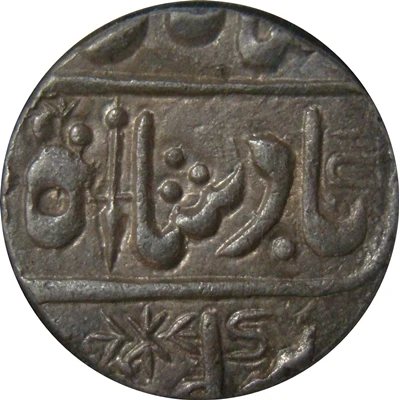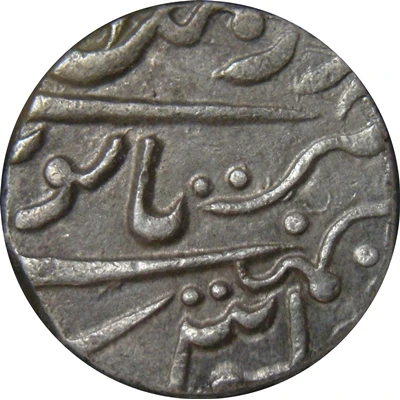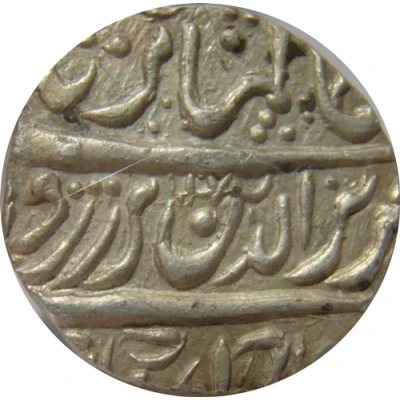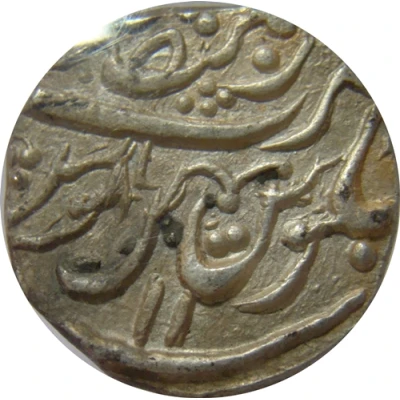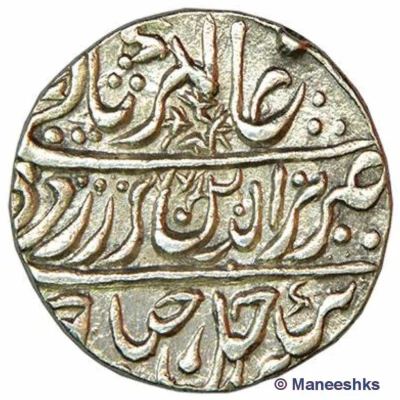
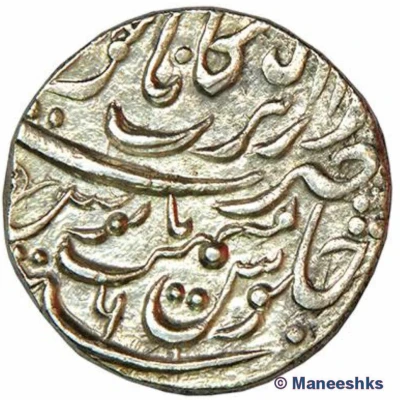

© maneeshks (CC BY-NC)
1 Rupee - Bijay Singh Dar-ul-Barkat Nagor
| Silver | 11.25 g | 25.05 mm |
| Issuer | Princely state of Jodhpur |
|---|---|
| Type | Standard circulation coin |
| Years | 1171-1174 (1758-1761) |
| Calendar | Islamic (Hijri) |
| Value | 1 Rupee |
| Currency | Rupee (1751-1945) |
| Composition | Silver |
| Weight | 11.25 g |
| Diameter | 25.05 mm |
| Thickness | 3.45 mm |
| Shape | Round |
| Demonetized | Yes |
| Updated | 2024-10-05 |
| Numista | N#363192 |
|---|---|
| Rarity index | 93% |
Reverse
Sana julus zarb nagor
Edge
Plain
Comment
INO Alamgir II.[His name is spelt both as Bijay and Vijay]
Maharaja Vijay Singh Rathore (6 November 1729 – 17 July 1793), was the Raja of Marwar Kingdom (First Reign 21 September 1752 - 31 January 1753 and Second Reign September 1772 - 17 July 1793).
He succeeded on the death of his father Maharaja Bakht Singh, 21 September 1752. He recovered Ajmer for a brief period and seized Godwar (from Mewar) and Umerkot from the Sodha's.
On 31 January 1753, he was deposed by his cousin Maharaja Ram Singh. He re-ascended the throne for the second time after the death of Maharaja Ram Singh in 1772. The Marathas under Mahadaji Scindia took advantage of the instability in Marwar. Mahadaji's first invasion in Tunga was a failure but he was able to decisively defeat the Rajputs in Patan and Merta. The Rajputs were no match for the European armed and French trained sepoys under Benoit De Boigne (a French mercenary), whose European tactics were far superior to the traditional Indian warfare that the Rajputs followed.
Maharaja Vijay Singh tried to push the Maratha marauders out but was defeated by Mahadaji Scindia. These defeats led to Marwar's bankruptcy and many internal rebellions by Marwari nobles. Ultimately, this lead to Marwar accepting British suzerainty in 1818.
Interesting fact
The 1 Rupee coin from the Princely state of Jodhpur, minted during the reign of Bijay Singh (Dar-ul-Barkat Nagor) from 1171-1174 (1758-1761), is notable for its unique design. The coin features a stylized depiction of the Sun God, Surya, on one side, and an inscription in Nagari script on the other. This design was a departure from the standard Mughal-style coins that were commonly used in the region at the time, and reflects the influence of the local culture and traditions on the coinage of the Princely state of Jodhpur.
